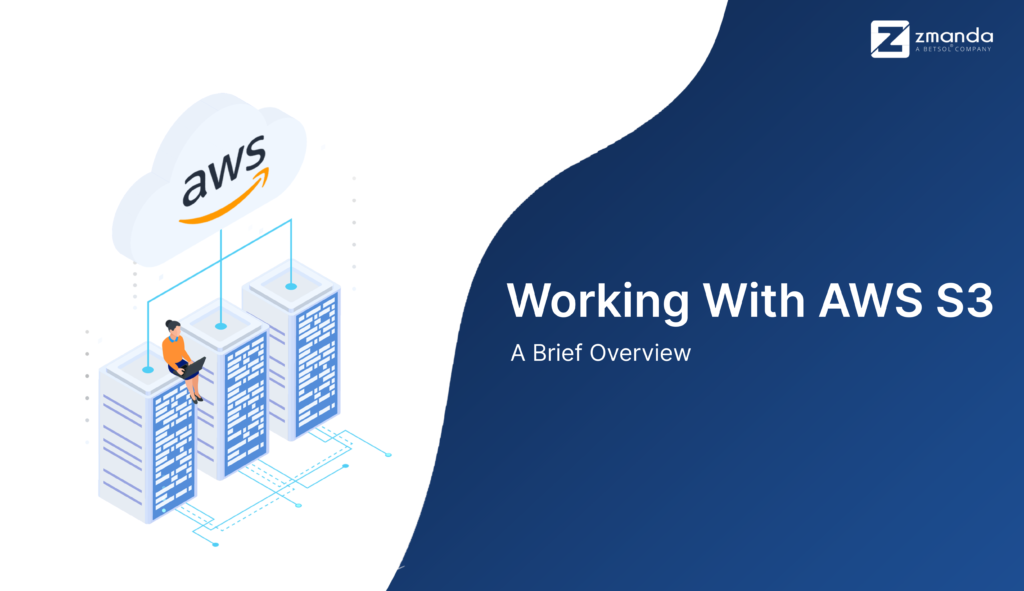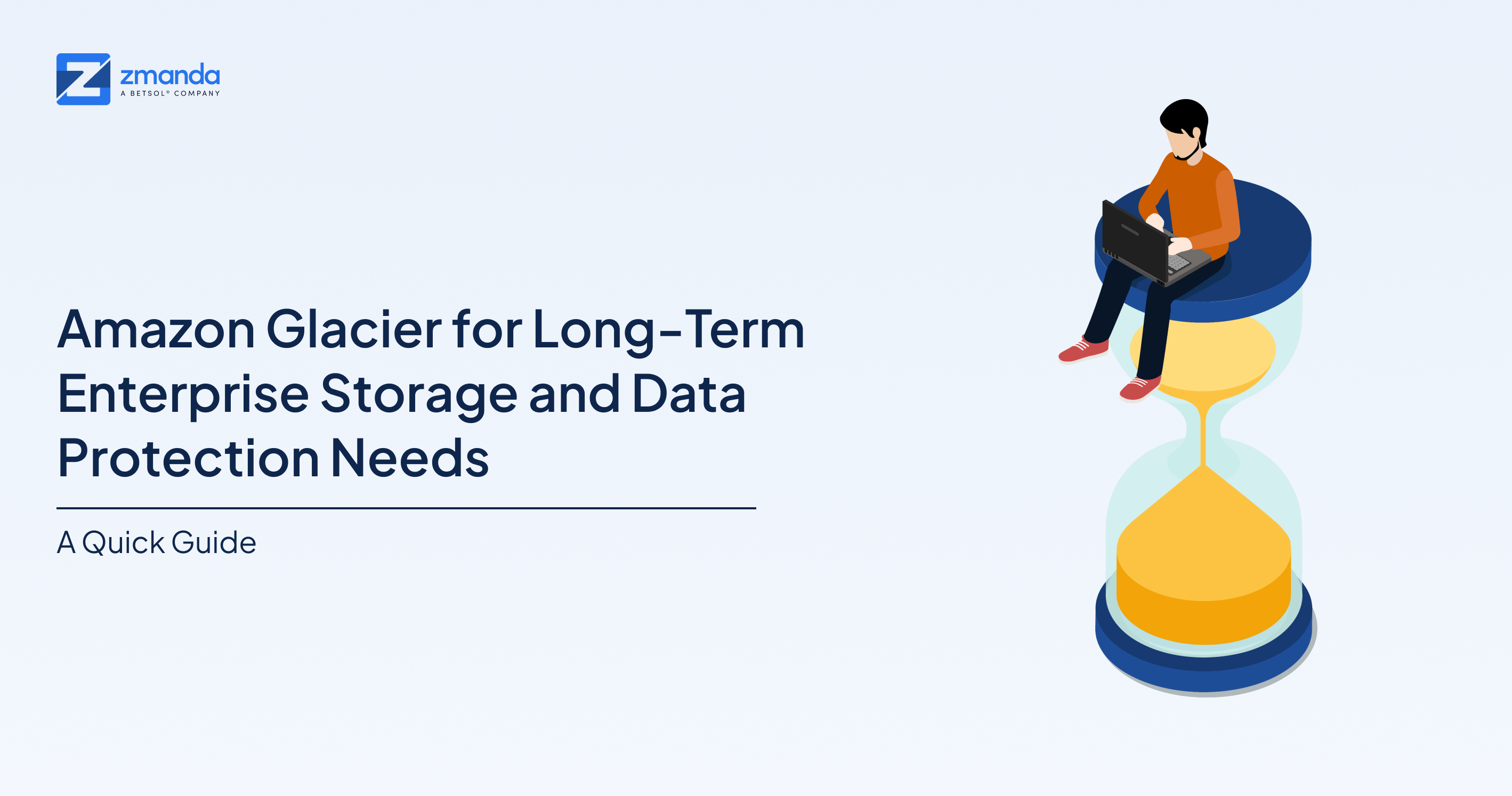
Enterprises generate large volumes of data daily. But, how much of that data is accessed daily? Well, all the different types of data that gets generated and backed up by the organizations will not have the same level of significance and access frequency. This makes it more reasonable to store the data based on the frequency of access to cut unwanted cost.
The varying options provided by AWS give you the freedom to opt for cloud storage that can optimize the storage cost without compromising on required features and performance.
If you are following our AWS series, you are already aware of different S3 storage classes that can be used for your data backup and recovery requirements. This blog will help you understand AWS Glacier for your long-term storage and data protection needs. By the end of this blog, you will also know the EBR solution that can go best with Amazon Glacier.
With Amazon S3 Flexible Retrieval storage class, you get a balanced speed of access with cost savings.
Isn’t it better to add more to cost savings? Well, using Zmanda as your EBR solution can help you do it. So let’s explore all about Amazon Glacier and make the most of it with Zmanda.
What is Amazon Glacier? What Are Its Key Features?
Amazon Glacier is a storage class of AWS that is meant for archiving rarely accessed data. You can store the data required for regulatory purposes in this storage class.
It charges you for storage, upload, retrieval, and transfer from S3 Glacier to the internet or other AWS regions. The pricing may vary, so you can refer to the AWS S3 pricing page for the latest pricing information.
Let us look at the features now:
- It offers you 99.999999999% (11 nines) of durability and virtually unlimited scalability.
- It redundantly stores your data across numerous Availability Zones that are distant from one another within a single AWS region.
- It supports compliance certifications such as EU GDPR, PCI-DSS, FISMA, SEC Rule 17a-4, and HIPAA/HITECH.
- The WORM storage enabled through S3 Object Lock offers added protection against ransomware attacks.
- It supports standard S3 APIs and features like Server-side encryption, S3 Storage Lens for monitoring usage, AWS PrivateLink for establishing a private connection between VPC and AWS, and S3 Lifecycle transitions.
Please note that Amazon Glacier has a minimum storage period of 90 to 180 days. Data deleted before the minimum storage duration elapses are chargeable as per the days remaining.
Scenarios Where You Can Use Amazon Glacier for Storage
Enterprises need to store all types of data, important as well as not-so-important for various purposes. Although organizations access some data daily, the particular set of data might not be used for years together. If the data is just used for reporting and analysis, the access frequency of that data is less. Also, the emails and other details backed up from the employee’s computer will only be used when the disaster strikes. Hence, it does not make sense to store them in expensive storage options, as it will just increase the overall backup cost.
Amazon Glacier is handmade for such a use case, as it offers you great savings. Even when you do need the data, the flexible retrieval storage class allows you to retrieve it within minutes to 12 hours.
Financial and healthcare institutions are required to retain their data for extended periods of time by regulations. In such scenarios, using Amazon Glacier will not only cost less but will also assure high durability. It can also assist in enforcing company policies regarding the duration of storage (long-term storage) for various types of data, including emails, finance, and HR records. The S3 Object lock facility helps you meet compliance requirements, for example, SEC Rule 17a-4(f). You can use the immutable backups feature of Zmanda to implement an object lock facility.
Data integrity is paramount for government agencies and libraries. AWS S3 performs data integrity checks regularly. It is also self-healing if data integrity is violated. This can take up a whole lot of work from enterprises as you need not conduct laborious data verification to ensure data integrity. Amazon Glacier makes long-term bulk storage affordable. S3 Lifecycle policies can be configured to transition data from other S3 storage classes onto Amazon Glacier based on needs.
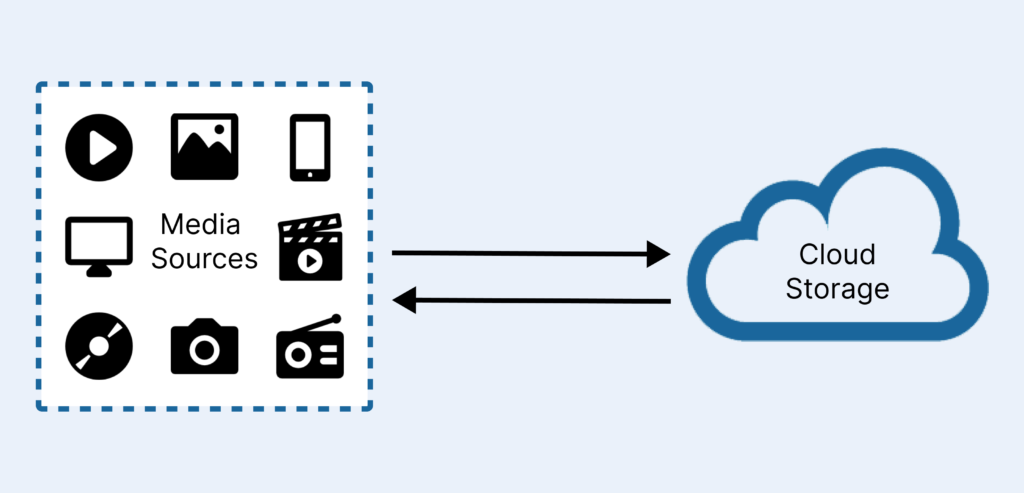
Media assets of today tend to be large in size due to the high-resolution video, such as 1080p and 4K. When such files need to be stored long term, it could turn out to be expensive. This is another scenario where Amazon Glacier can help you save money.
What if you could add some more features to the already feature-loaded Amazon Glacier storage? Sounds awesome, right? Well, you can accomplish it by using Zmanda as your backup and recovery partner. Time to explore some of the possibilities in this direction.
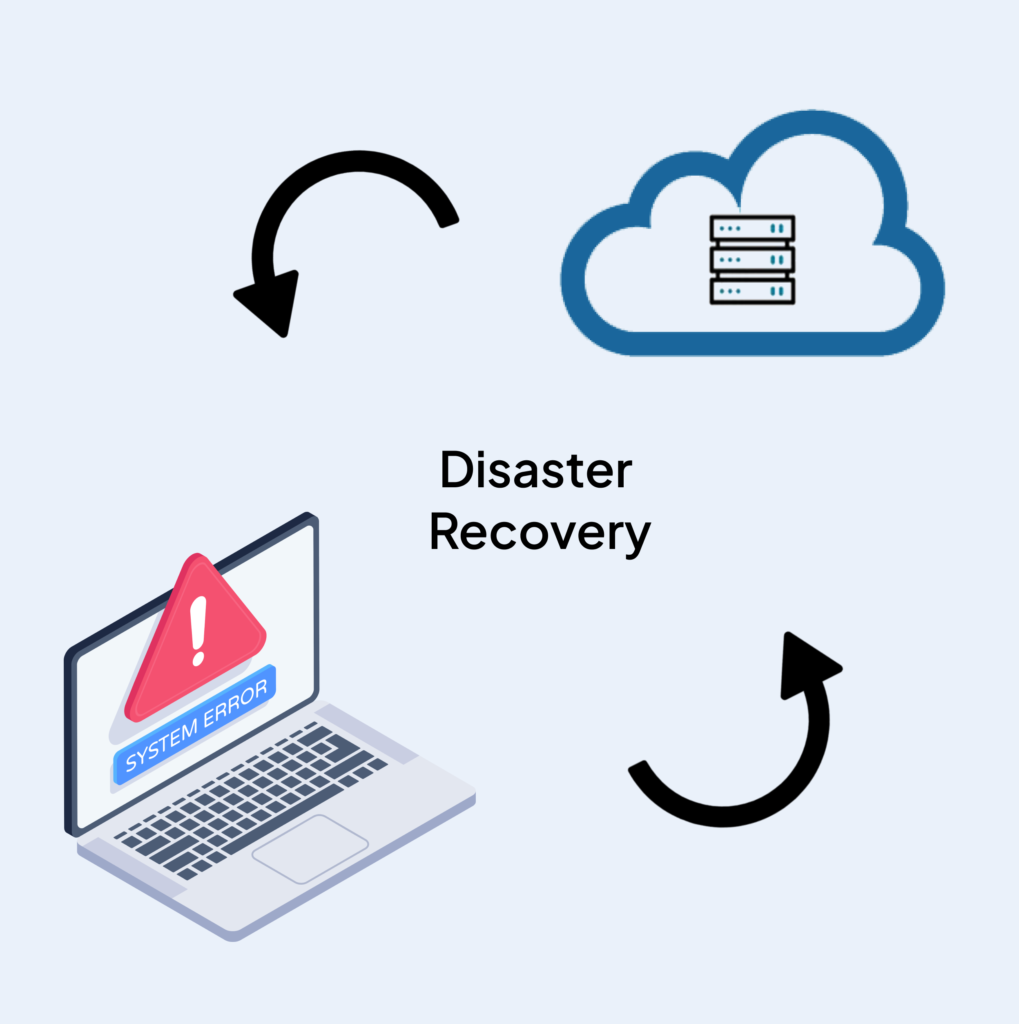
Why Choose Zmanda for Backup Your Data to Amazon Glacier?
Modern-day businesses use diverse devices like computers and tabs with different OSs and other technologies for fulfilling business requirements. Data needs to be captured from all these devices and backed up reliably. The ability to take these required backups and restore them when needed from a single portal simplifies things for businesses. In addition, data may also need to be stored on different targets as each target has its own advantages and disadvantages. Zmanda and Amazon Glacier fit the bill perfectly for this.
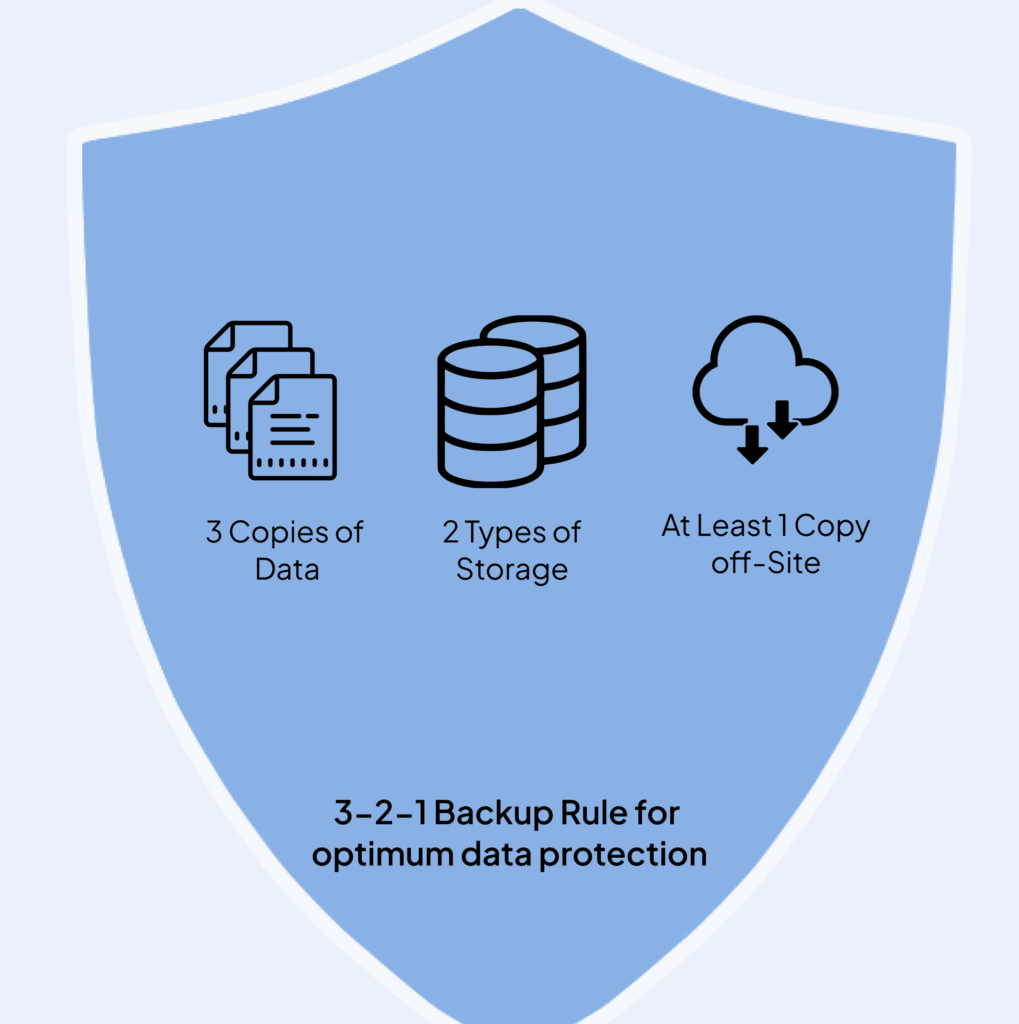
The wide compatibility of targets offered by Zmanda is useful in the implementation of the 3-2-1 backup rule. You can use Amazon glacier for rarely accessed data in conjunction with other hot storage mediums (AWS S3 Standard/Disk/NAS) as needed.
The new cloud backups stability feature will make your backup and restores via AWS S3 smoother despite network interruptions.
As you have learned from the first blog of this series, Zmanda offers some pretty customer-centric features when using AWS S3 as the target like the archive to Glacier right from Zmanda UI, multipart upload API, and customizability of the number of threads.
Using Zmanda With S3 Glacier
Configuring the archival of your data onto S3 Glacier could be more simpler with Zmanda as you can do it right from the Zmanda Management Console (ZMC) itself.
On the Backup Where page of the backup set that uses AWS S3 as storage, you get this checkbox titled ‘Archive to glacier’. You just need to check the checkbox and specify after how many days you want the archiving to happen in the Number of days field.
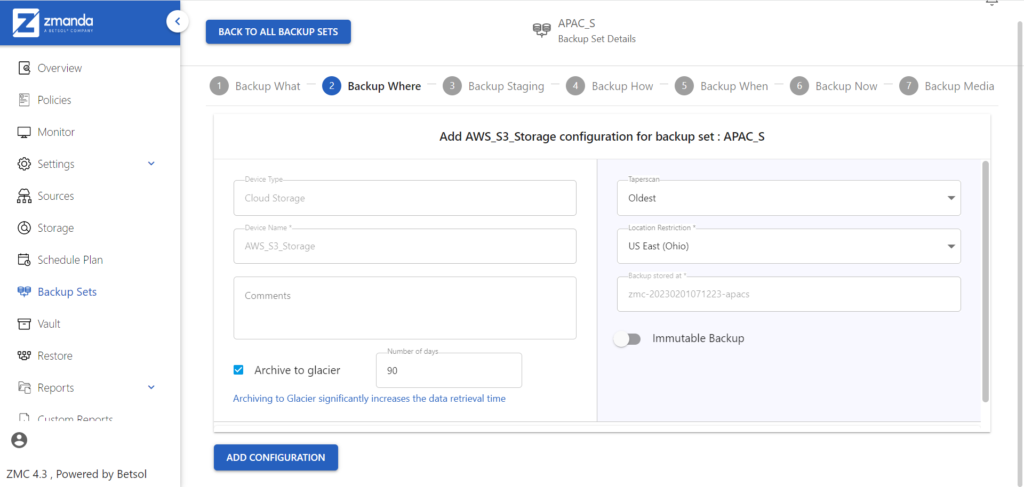
While Amazon Glacier is a utilitarian storage class, no doubt, leveraging it in the right scenarios is equally important.
Industry Insights on How Zmanda Works With AWS S3
3Jane Digital Holdings is a software and consulting firm that provides tools and help for global companies in building their social networks. They offer assistance right from design and development up to audience growth and advertising. Therefore, their infrastructure comprised Microsoft Exchange and self-developed applications along with an assortment of Windows and Linux servers. Along with this, they also had several database-driven applications leveraging MySQL distributed across servers.
3Jane needed a centralized backup and recovery solution that allowed seamless integration for the creation of new backup sets to protect the dynamically changing content on their servers. Zmanda Management Console filled this need perfectly. To avoid the overhead of maintaining an off-site storage infrastructure, they chose AWS S3 as the target. And as Zmanda works perfectly fine with any target storage, it became easy for them to manage their data.
Our customers make most out of Zmanda with the help of our qualified team. You can read through our customer success stories to know how Zmanda can help companies with their enterprise backup in different ways.
Summing It Up
Zmanda is reasonably simple to set up and run in spite of its capability to back up data from a myriad number of clients of different kinds. You can also scale it up and down quite easily, so no matter what your configuration looks like, Zmanda fits perfectly.
AWS Glacier being low-cost cold storage serves as the go-to option for most enterprises. It seamlessly fulfills all the requirements of data storage for regulatory purposes in the most reliable and secure manner. Zmanda delivers fast and easy storage using AWS Glacier.
We feel Zmanda and Glacier can team up well together to make your disaster recovery simple, seamless, and cost-effective without compromising on storage and performance.
Are you excited to check out Zmanda? We offer you a fully licensed version for 14 days in the free trial. If you are curious to learn more about Zmanda, feel free to reach out to our super helpful support staff.

